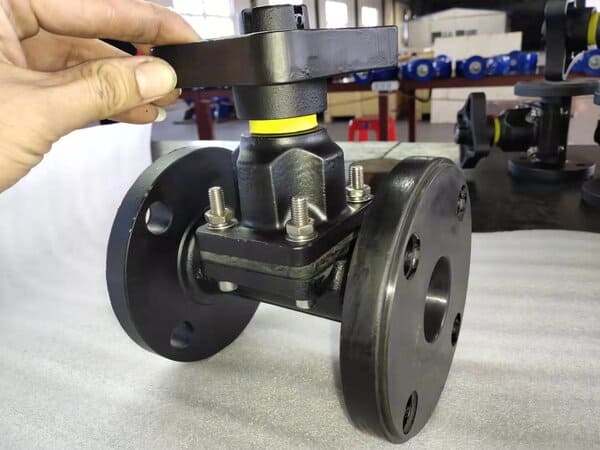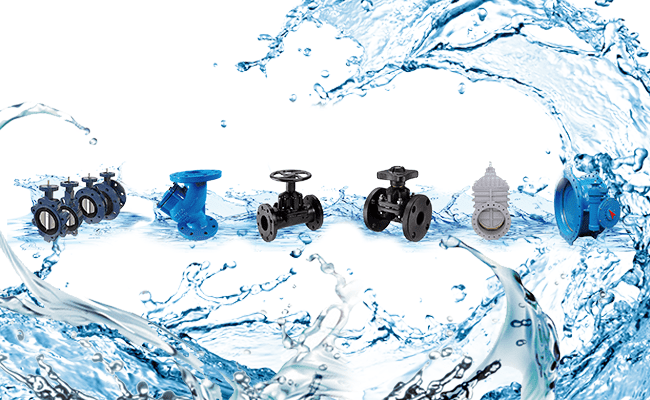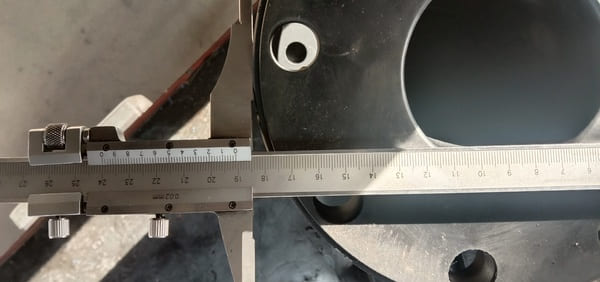The structure of the diaphragm valve is quite different from the general valve. It is a new type of valve and a special form of cut-off valve. Its opening and closing part is a diaphragm made of soft material. The inner cavity of the cover and the driving part are separated and are now widely used in various fields. Commonly used diaphragm valves include rubber-lined diaphragm valves, fluorine-lined diaphragm valves, unlined diaphragm valves, and plastic diaphragm valves.
The role of the diaphragm valve

The diaphragm valve connects the low-pressure safety oil system of lubricating oil and the high-pressure safety oil system of EH oil. Its function is that when the low-pressure safety oil pressure of the lubricating oil system drops to 1.4MPa, the turbine can be interrupted by the EH oil system. When the steam turbine is working normally, the turbine oil of the lubrication system flows into the oil chamber on the piston in the valve, overcomes the spring force, makes the valve in the closed position, blocks the oil drain channel of the EH critically blocked oil header pipe, and makes the EH system put into operation Work. When the emergency interrupter is activated or the brake is manually opened, the turbine oil pressure can be reduced or disappeared, so that the compression spring opens to drain the EH emergency interruption oil and close all the inlet valves.
The advantage of the diaphragm valve is that its operating mechanism is separated from the medium passage, which not only ensures the purity of the working medium, but also prevents the possibility of the medium in the pipeline from impacting the working parts of the operating mechanism. In addition, there is no need to use any form of separate seal at the valve stem, unless it is used as a safety facility in the control of hazardous media.
The working principle of the diaphragm valve
Diaphragm valve is a special form of shut-off valve. Its opening and closing part is a diaphragm made of soft material, which separates the inner cavity of the valve body from the inner cavity of the valve cover and the driving parts. Diaphragm valve is an elastic, disturbable diaphragm, which is connected to the compression part by bolts. The compression part is operated by the valve stem to move up and down. When the compression part rises, the diaphragm is lifted high, which creates a passage. When descending, the diaphragm presses on the valve body weir (if it is a weir type valve) or presses on the bottom of the contour (if it is a straight-through type), the diaphragm valve is suitable for switching and throttling.
The structural design of the diaphragm valve itself is particularly suitable for ultra-pure media or heavily polluted, very viscous liquids, gases, corrosive or inert media. When combined with control equipment, diaphragm valves can better replace other traditional control systems, especially suitable for solid and easily polluted inert media.
Mainly used in biopharmaceuticals, food, industries; and industrial water treatment in power, chemical, electroplating, and other industries. It is also used in the production of semiconductor wafers. Diaphragm valves are especially suitable for transporting corrosive and viscous products. Fluids, such as mud, food, medicines, fabric adhesives, etc., because the operating mechanism of the diaphragm valve in the pipeline is not exposed to the conveying fluid, it is not polluting and does not require packing. The valve stem packing part is also It is impossible to leak.
The working temperature of the diaphragm valve is usually limited by the materials used in the diaphragm and the valve body lining, and its working temperature range is approximately -50 to 175°C.
Maintenance of diaphragm valve
①Before installing the diaphragm valve, carefully check whether the operating conditions of the pipeline are consistent with the scope of use specified by the valve, and clean the inner cavity to prevent dirt from jamming or damaging the sealing parts.
②Do not apply grease or oil on the surface of the rubber lining and the rubber diaphragm to prevent the rubber from swelling and affecting the service life of the diaphragm valve.
③The hand wheel or transmission mechanism is not allowed to be used for lifting, and collision is strictly prohibited.
④ When manually operating the diaphragm valve, do not use auxiliary levers to prevent excessive torque from damaging the drive components or sealing parts.
⑤Diaphragm valves should be stored in a dry and ventilated room. Stacking is strictly prohibited. The channels at both ends of the stock diaphragm valve must be sealed, and the opening and closing parts should be in a slightly open state.
Common failure of diaphragm valve one: diaphragm breakage
①Cause: aging of rubber and fluoroplastic diaphragm
Prevention and elimination method: regular replacement.
②Cause: Excessive operating pressure, crushing the diaphragm
Prevention and elimination method: The operating force should be small, pay attention to the closing mark.
③Causes: foreign matter is embedded between the diaphragm and the valve seat, pressing or wearing the diaphragm
Prevention and elimination method: Do not forcefully close the valve during operation. It should be repeatedly opened and closed several times. After washing away the foreign body, the valve should be officially closed; the diaphragm should be replaced in time if it is damaged.
④Cause: The opening height is too large, and the diaphragm is broken
Prevention and elimination method: Do not open too high during operation.
Diaphragm valve common failure two: operation failure
①Cause: the diaphragm and the valve disc fall off
Prevention and elimination method: Do not be too high when opening, repair or replace the diaphragm in time after falling off.
②Cause: The connecting pin between the valve stem and the valve disc falls off or breaks due to wear
Prevention and elimination method: It is not allowed to exceed the top dead center when opening, and it should be repaired in time after falling off.
③Cause: the connection between the movable stem nut and the valve bonnet and stem is worn and stuck
Prevention and elimination methods: regular cleaning, coating the active parts with graphite and molybdenum disulfide dry powder for lubrication; the fluorine diaphragm structure can add a small amount of grease to the active parts.


